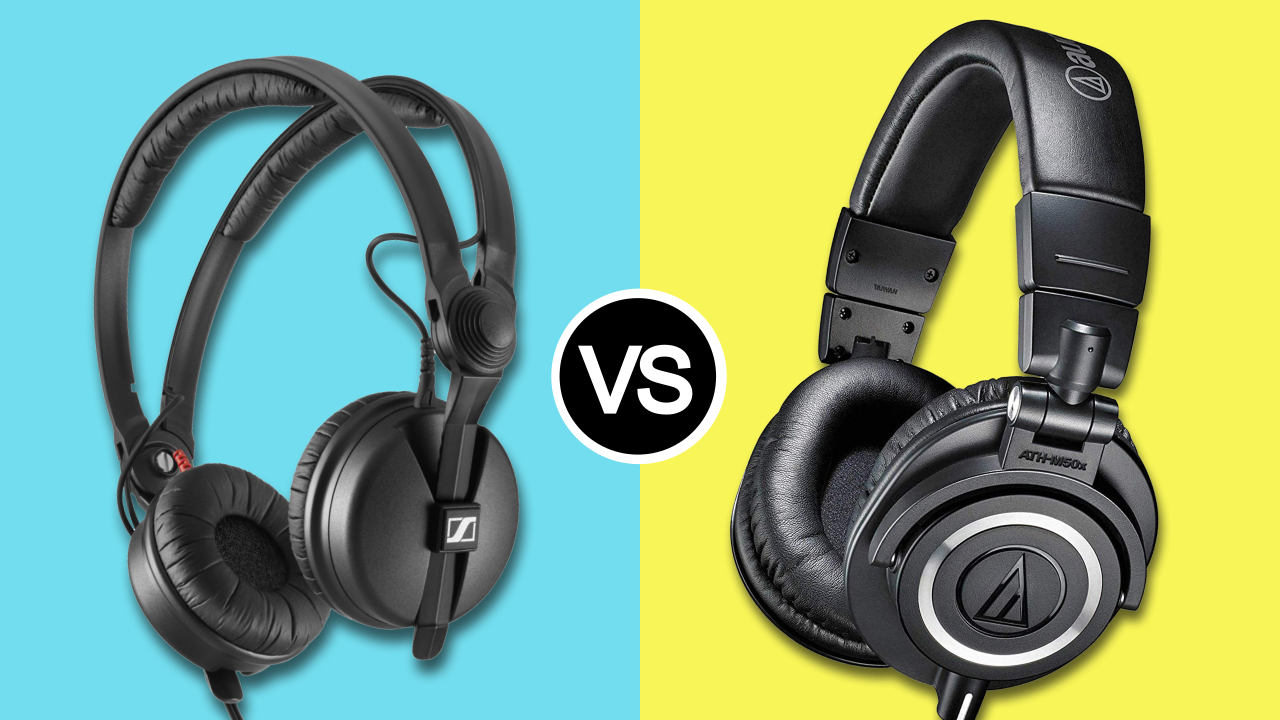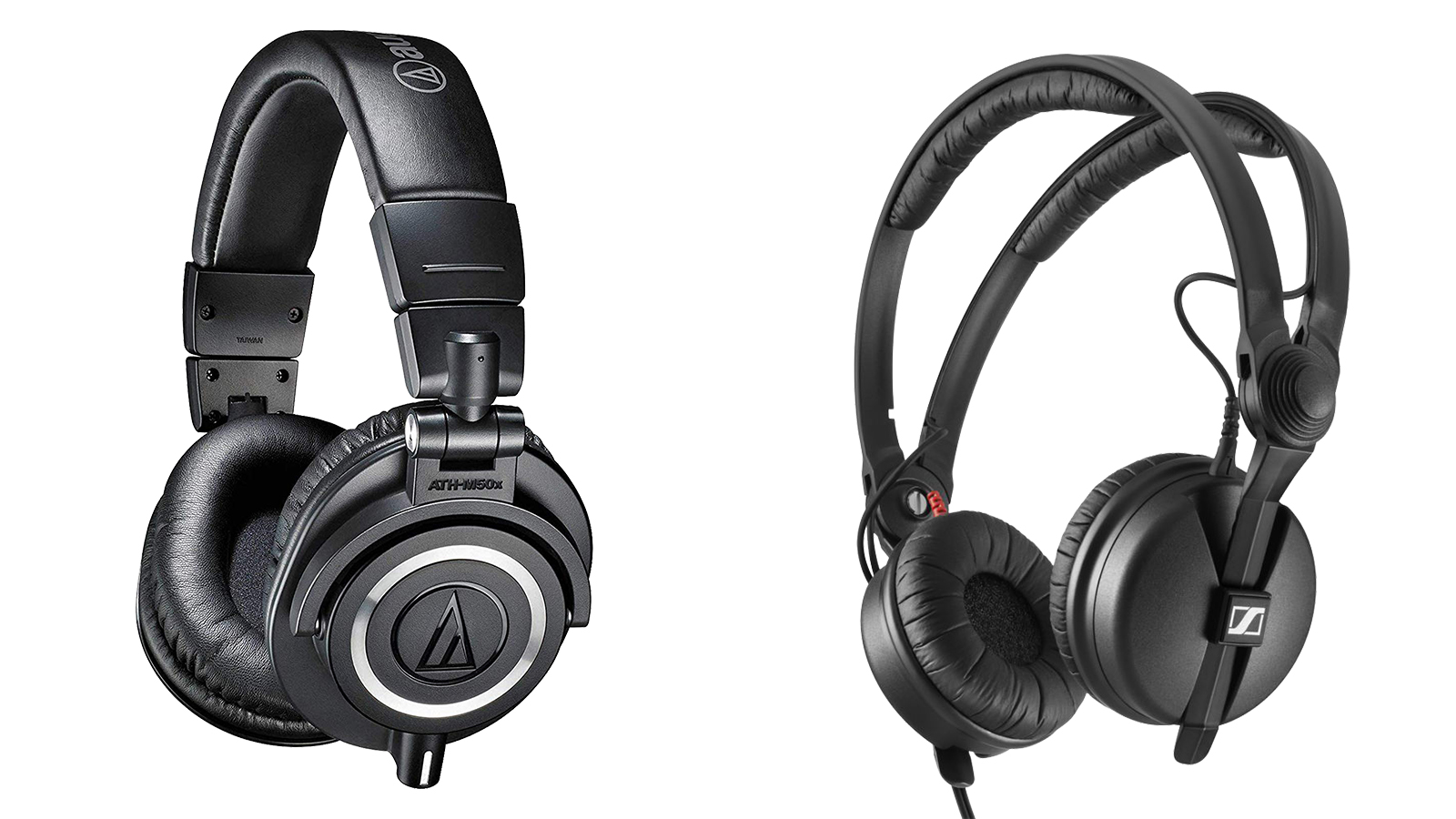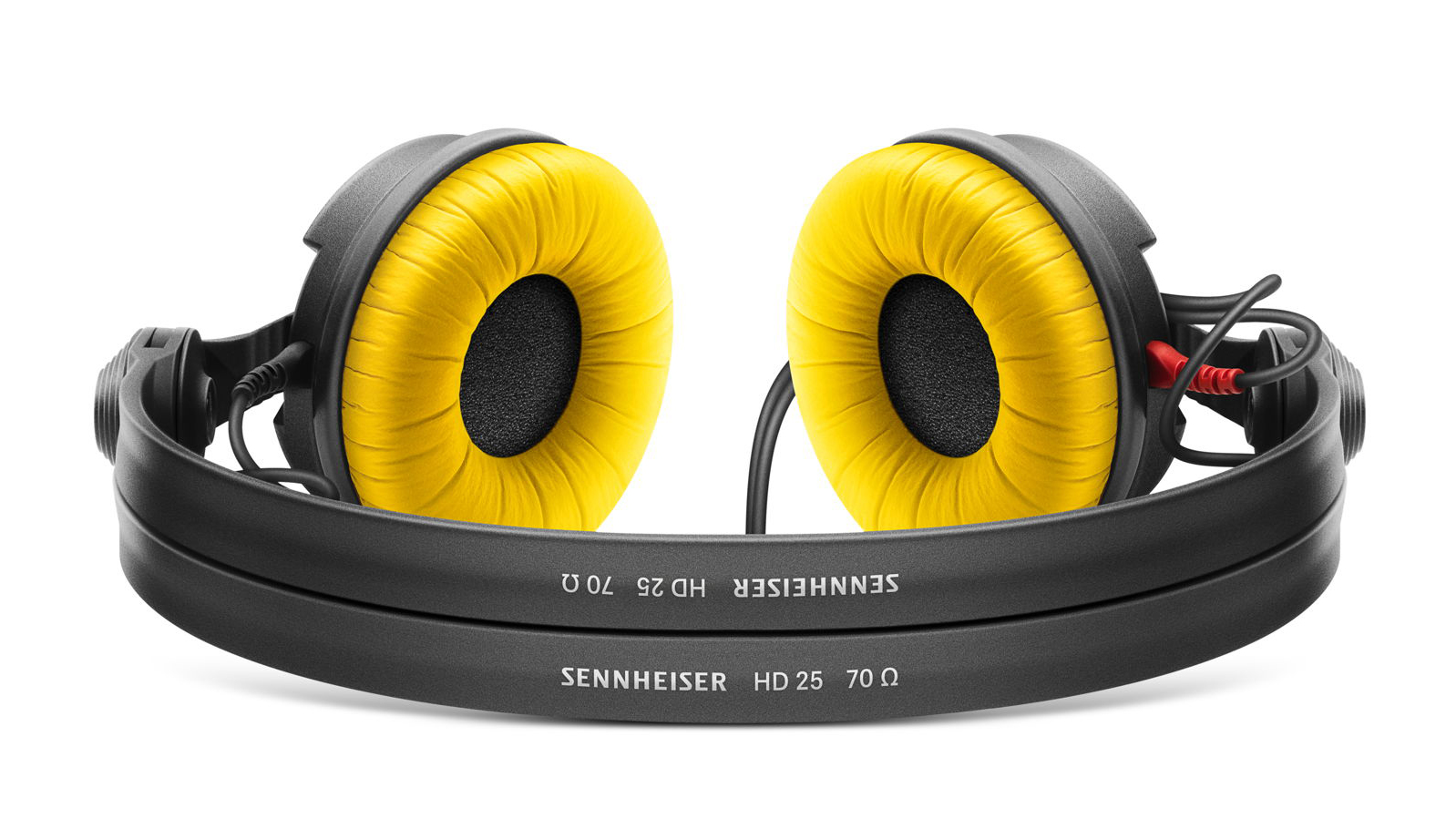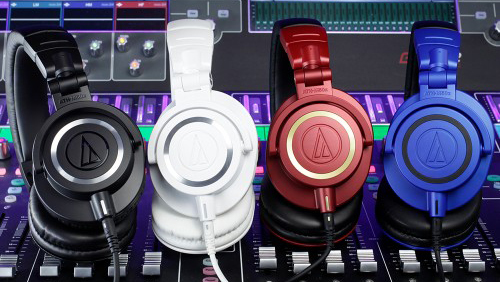Sennheiser HD 25 vs Audio-Technica ATH-M50x: studio headphones head-to-head
After a new set of headphones for music production? We square up two studio favourites to see which comes out on top

Beyond simply listening for entertainment, a good pair of studio headphones needs to be a reliable go-to for monitoring while tracking and mixing. The ideal headphones for monitoring and mixing purposes are those that compensate for your own particular hearing curve.
It doesn't matter if your headphones don’t exhibit a perfectly flat response – as long as they complement the response of your ears, they’ll work for you as great reference monitors for music production. To that end, we’ve selected two popular, almost identically-priced options from our guide to the best studio headphones – Sennheiser’s HD 25’s and Audio-Technica’s ATH-M50x’s – to figure out which is best overall for general studio use.
- Best studio monitors: affordable to high-end studio speakers
- Best budget studio monitors: affordable studio speakers for home recording
- Our pick of the best closed-back headphones for music makers
- Our pick of the best Sennheiser headphones for recording
Sennheiser HD 25 vs Audio-Technica ATH-M50x: spec
MusicRadar's got your back

Price: $99/£129/€99
Type: Closed-back, on-ear
Frequency response: 16Hz - 22kHz
Impedance: 70Ω
Driver type: Dynamic, closed
Connection: Wired, Jack plug 3.5/6.3 mm stereo
Weight without cable: 140g
Read our Sennheiser HD 25 review
Today's best Audio-Technica ATH-M50x deals
Price: $120/£115/€128
Type: Closed-back, over-ear
Frequency response: 15Hz - 28kHz
Impedance: 38Ω
Driver type: Large-aperture w/neodymium magnets, 45mm Connection: Wired, Jack plug 3.5/6.3 mm stereo
Weight without cable: 285g
Read our Audio-Technica ATH-M50x review
Sennheiser HD 25 vs Audio-Technica ATH-M50x: features
So what does each of our chosen cans offer for your money? Both feature standard 3.5mm stereo jack connectors with bundled, threaded 6.3mm adapters that screw on to prevent accidental disconnects. The HD 25’s cable is straight rather than curly, and not overly long at 1.5m, connecting to the right earpiece only.
Conversely, the M50x’s are supplied with three different detachable cables to suit varying requirements – a 1.2m coiled lead that extends to 3m in length for studio applications, a 3m straight cable and a 1.2m straight cable intended more for use on the move. The plus point of this is that you can change the cable to suit your requirements, the downside is that the connection is proprietary – you insert the cable into the left earpiece and twist to lock it in – so if you lose or break a cable, you’ll need to order a replacement.
You get a leatherette carrying pouch with the M50x’s, an accessory that’s only available with the HD 25’s if you opt for the more expensive ‘Plus’ version, which also includes extra earpads and a spare, coiled cable. Neither model has Bluetooth, although there is a wireless, Bluetooth-compatible version of the M50x’s – the M50xBT – available as an alternative.
The earpieces on both headsets are articulated, albeit in different directions – the left can on the HD 25’s rotates in the vertical plane for off-ear vocal tracking or DJing, while those on the M50x’s both rotate in the horizontal plane, so the cans sit flat on your chest when worn around the neck. The M50x’s earpieces also fold upwards into the headband area for easy storage and transportation.
- The best in-ear monitors: IEMs to suit all budgets
- Best budget in-ear monitors: recommended cheap in-ears for musicians
Sennheiser HD 25 vs Audio-Technica ATH-M50x: build

Build quality is excellent with both headsets. The M50x’s are, in a word, chunky, with copious amounts of leatherette-encased padding on the earpieces and headband. All this extra padding and the generous-sized 45mm drivers result in them weighing in at almost exactly double the weight of the more slimline HD 25’s. Conversely, the Sennheisers’ split headband can be opened and closed freely for varying degrees of support, with just enough padding on the underside of both sections to ensure a comfortable fit.
However, the HD 25’s headband is so firmly sprung that the circular earpads are securely clamped to the side of your head, sitting on the outside of the ear, rather than fully enclosing it. This can result in some discomfort from ‘squashed ear syndrome’ after more than 30 minutes or so, necessitating frequent breaks.
Regardless of this, or perhaps because of it, you do feel fully immersed in the soundstage when wearing the HD 25's. They’re also incredibly lightweight, especially when you consider that there’s an even lighter version – the HD 25 Light – available that eschews the standard model’s split headband. The earcups adjust up and down a couple of inches on each side, enough to accommodate most head shapes with ease.
In contrast, the earpads on the M50x’s are the all-encompassing type, that thick oval of padding enclosing the ear completely, giving the M50x’s the edge when it comes to blocking out ambient chatter. The earpieces are clearly labelled left and right, whereas on the HD 25’s there’s no obvious indication as to which side is which, until you figure out that red equals right!
The M50x’s headband tension is not quite as pronounced as on the HD 25’s, but they still exert a firm enough grip to fully seal off the ear. They’re supremely comfortable, so great for extended listening sessions, but they can get warm if you’re in a hot climate, or like to wear them for playing drums – the more lightweight, more open HD 25’s might be a better choice for energetic drummers who prefer not to have sweaty ears!
Sennheiser HD 25 vs Audio-Technica ATH-M50x: usability/audio quality
Both sets of cans prove a hugely enjoyable listen when applied to general day-to-day listening duties – streaming Apple Music over an iPhone or listening to CDs through a regular (old-school) HiFi system, for instance. Due to the relatively low impedance (70Ω for the Sennheisers and only 38Ω for the M50x’s), there is plenty of volume on tap with no need for an additional amp, and we experienced no ear fatigue with either model.
An abundance of low-end punch and clarity is apparent on both sets, but especially on the M50x’s, on which the bottom end was noticeably warmer. Mids were clear and present in each case, and upper detail couldn’t be faulted on either set, but we came away with the impression that the M50x’s delivered the better high-end clarity overall.
In terms of flatness of response, the usual yardstick when selecting reference monitors, there isn’t much to call between the two models in degrees of flatness. They both exhibit a small bass bump around 100-150Hz, after which the HD 25’s are arguably flatter, but the tweaked sound profile of the M50x’s just seems to work better for us in most cases.
Sennheiser HD 25 vs Audio-Technica ATH-M50x: verdict

Headphones are notoriously tricky to evaluate, because they’re so subjective. When looking for a pair to mix on, for instance, you may need to try out several before you find a pair that makes what sounds good to you sound good everywhere else. To test our two contenders, we performed separate mixes of the same track using each headset, then played the results on a number of different systems, including a JBL Bluetooth speaker, various laptop speakers, a pair of Miller and Kreisel professional studio monitors and an in-car Harman-Kardon speaker system.
While these are both fantastic cans, we found our preference split according to use case. We preferred the HD 25’s for tracking due to their light weight and general chuckability, and they remain top of the wishlist for DJ’s, cameramen and location recordists due to their outstanding performance in loud environments.
Meanwhile, offering a sound profile that lends itself equally well to mixing and recreational listening, the M50x’s came out on top for these tasks, due to the - admittedly slight - edge over the HD 25’s in our test mix results and superior comfort over long periods.
Get the MusicRadar Newsletter
Want all the hottest music and gear news, reviews, deals, features and more, direct to your inbox? Sign up here.
Dave has been making music with computers since 1988 and his engineering, programming and keyboard-playing has featured on recordings by artists including George Michael, Kylie and Gary Barlow. A music technology writer since 2007, he’s Computer Music’s long-serving songwriting and music theory columnist, iCreate magazine’s resident Logic Pro expert and a regular contributor to MusicRadar and Attack Magazine. He also lectures on synthesis at Leeds Conservatoire of Music and is the author of Avid Pro Tools Basics.
